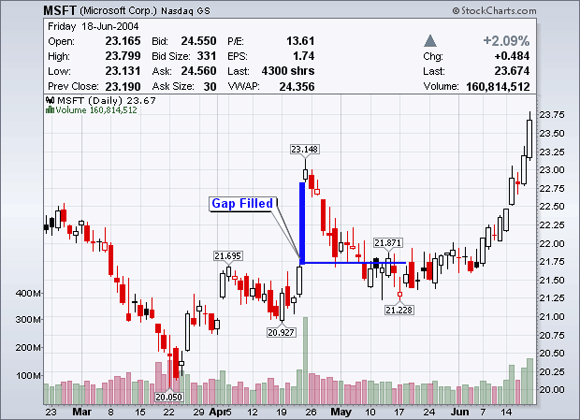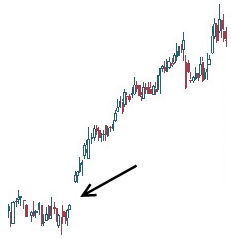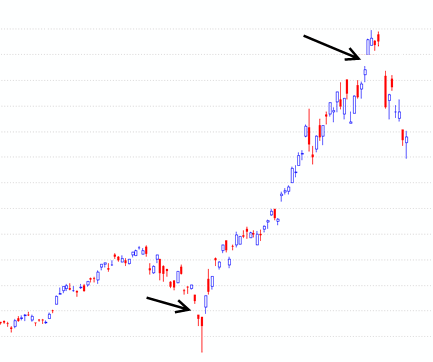A gap occurs when the close of the market on one day is significantly different than the open of the next day. Many things can cause this such as earnings reports, press releases, or new analyst ratings. Gaps show that something important has happened to the fundamentals or the psychology of the investment community.
The common gap is usually uneventful and typically gets filled fairly quickly. The term “Getting Filled” simply means that the stock price retreated to the same level as the last day before the gap. Below is an example of a gap that has been filled. See how prices came down to at least the beginning of the gap?

Breakaway gaps occur when the stock price breaks out of resistance (such as a trendline) or congestion. A congestion is a price range in which the stock has traded for a significant amount of time. Market enthusiasm is required to break through these areas and cause a breakaway gap. Volume should pick up significantly after the gap occurs for a better a chance of continuing to the upside (or downside if the gap was a fall rather than a rise).

Exhaustion gaps occur near or at the end of a good run (or fall) and often times signal the end of a trend. They are known for their high volume and large price difference between the previous day’s close and the new opening price. Exhaustion gaps are arguably the easiest to trade for profit.


